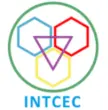
6-Step Process to Develop a Website for an Engineering Firm
Read a summary using the INOMICS AI tool
Developing a robust website is more complex than most people realize. Building a successful online presence requires considerable planning and organization to make the process run smoothly in the long term. With careful research, setting up your site can be faster and easier for your team, although you don't need to go about it alone. In this post, we will walk through our six-step process for building a successful website for an engineering firm.
1. Gather Information
Web development starts with research. You'll need to research the engineering firm and its goals, target audience, brand identity, competitors, and other vital elements that help you decide on a strategy. This is also the time to get familiar with industry trends and standards in website design. This step aims to get a deep understanding of the firm and its goals for the website. A well-informed website design better serves the client's needs and makes it easier to create a successful website. Consider designing a wireframe or prototype to better understand the site's navigation and user experience.
2. Create a Plan
You need a roadmap for your website's development to ensure you stay on track. This will help you prioritize tasks, set deadlines, and manage the project more efficiently. Creating a plan also helps everyone involved understand the timeline of events and gives them an idea of their role in the process. You can start by setting and breaking down the website's goals into achievable tasks. Then create a timeline so everyone on your team knows deadlines and expectations. The plan should include content creation, developing the site structure, and implementing features.
3. Design
A website's design is one of the most critical elements of its success. It should engage users, communicate a message clearly, and be easy to use. Designing a website requires experienced professionals who understand coding, user experience (UX) principles, and visual language. Your team should develop a cohesive look and feel that fits the engineering firm and its target audience. A web development bootcamp or course can help you develop the skills needed for website design. You can also consider seeking help from a professional web design agency.
4. Develop Your Content
Content is the backbone of a website. It's what makes your site useful and helps engage users. Content should be informative, relevant, and engaging. When writing content for an engineering firm website, you must consider the target audience and their needs. You must also ensure it is clear, concise, and easy to read.
As an engineer, your content should also be optimized for search engines (SEO) to ensure your website is discoverable when users search. You can include relevant keywords and phrases strategically throughout the site's copy. Content migration and website content management (CMS) are also important considerations. This ensures that the site is always up-to-date with the latest information and makes managing content easier in the long run. You should also consider the content delivery process and how you will ensure that all content is delivered to users promptly.
5. Create Your Code
Coding is the foundation of any website. It's what allows all the other elements to work together and create an engaging, functional experience for users. A well-coded website ensures that everything works seamlessly and performs optimally. You might need a developer or web development agency to create the code for your engineering firm's website.
Frameworks and CMSs such as WordPress can also be used to help you create the code for your website. These tools allow you to develop a site quickly and easily without extensive coding skills. A good web development agency should be able to implement and manage these tools for you. The static web page elements, HTML, CSS, JavaScript, are essential considerations when coding a website. These elements create the structure and style of your website and should be developed with care to ensure that the site performs optimally.
6. Test, Review, and Launch
Testing and reviewing your website is essential before launch. This ensures all elements work correctly and the site meets your goals. Testing should include manual, automated, and user experience (UX) tests to ensure everything is working as expected. Once you have tested the site, it's important to review everything one last time to ensure it's ready for launch. This includes checking the content, design, and code to ensure everything works correctly.
You can launch your website once you have tested and reviewed it. This might involve setting up domain hosting and any other technical tasks needed to make the website live. Remember to monitor performance after launch and ensure you can respond quickly to issues or user feedback.
Web development for an engineering firm's website is complex but rewarding. By following the steps outlined above, you can create a successful site that meets your business's needs. The process involves a lot of planning, strategizing, and developing, but in the end, it should result in an engaging website that users will love.
Author Bio
Joseph Blake has been a website developer for three years now. He loves all the challenges involved in the job. He likes sharing strategies about website development, so he writes guest posts and blog articles at least twice a month. His hobbies include outdoor activities like surfing and playing frisbee.
Image Credit: Pixabay
We would like to thank Fullstack Academy for their support in producing this advice article for New Engineer.








